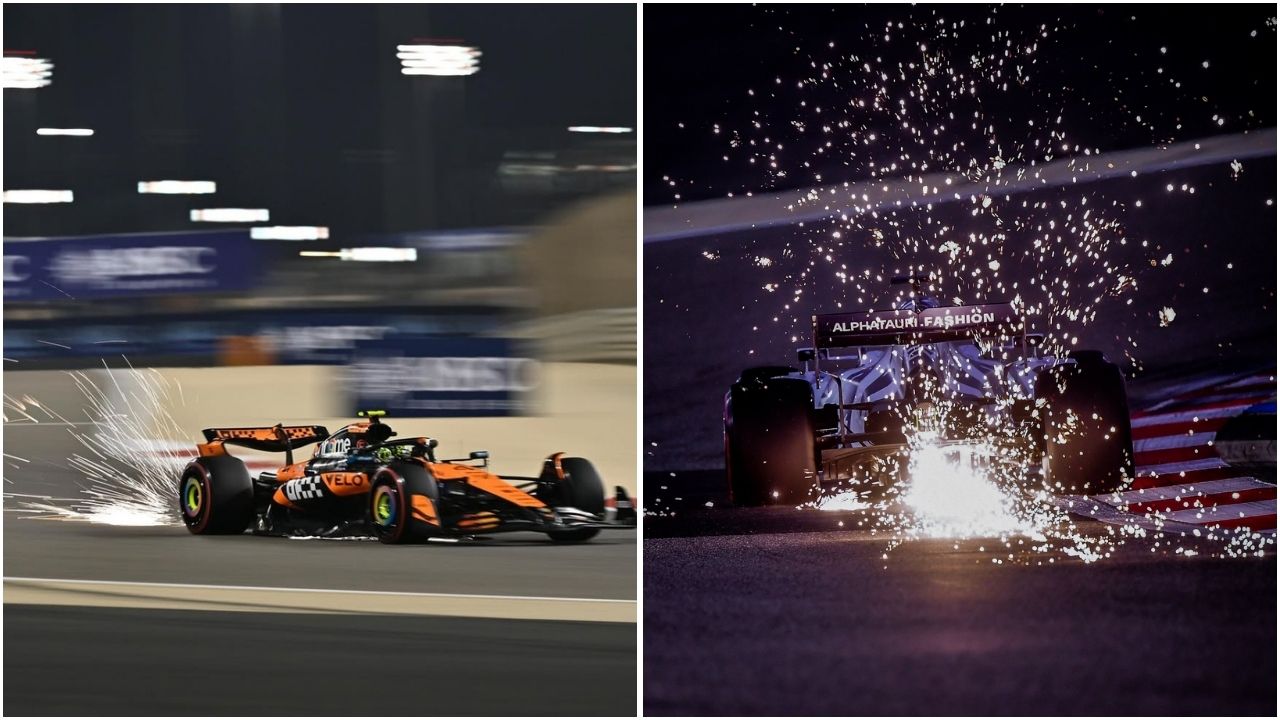Sparking under F1 cars is one of the most magnificent phenomena of the sport. This visually appealing case usually happens on tracks where teams run their cars lower. More so, if they have an uneven or bumpy surface. But what is the exact reason it happens?
These sparks have been a part of Formula 1 since the late 1980s, when teams would run their cars as close to the ground as possible. This ensured more downforce, enabling them to corner at higher speeds. However, the reason it happens today is slightly different. In 1994, the sport’s authorities mandated teams to use a 10mm wooden plank below the cars. This was to make sure that they ran at a minimum ride height. After the race, if the plank was found to be too damaged, the cars were disqualified.
Part of these planks are the skid blocks, which were earlier made from a harder metal. But some regulation changes a decade ago mandated using a titanium alloy. This particular material, when it makes contact with the ground at high speeds, the friction generates sparks. The underbodies of the cars generating friction on contact with the track are the major reason for it.
Why do F1 cars run so low to the ground?
To understand the aerodynamics in F1, it is easier to think of the cars’ front and rear wings as inverted aeroplane wings. The latter generates lift at higher speeds, and F1 cars stick more to the ground as they reach their top speeds. More downforce means cars can corner at higher speeds, and thus, the ride height also plays a role in the same.
If the cars are running at minimal ride heights, they will generate more downforce. This will help them to set a better laptime. As mentioned, running so low causes the cars’ underbodies to scrape on the track, generating sparks.
Interestingly, this is also noticed when the cars are chasing at high speeds. This happens because the chasing cars can sometimes run a lot faster because of the DRS and slipstream. Running faster makes them stick to the ground even more, making it a visually appealing scenario for the viewers.
However, these sparks could also mean a potential threat to the drivers. If the cars are running too low, they will generate more sparks. Which further means that the skid wear could be too high, resulting in a possible disqualification. Earlier this season, Lewis Hamilton was disqualified from the Chinese GP for this reason.



